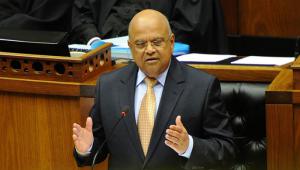Gordhan used his budget speech to reveal that ‘economic turbulence’ in the second half of last year had led to an R16.3bn shortfall in forecast revenues. This means South Africa’s budget deficit for 2012/13 is expected to be equivalent to 5.2% of gross domestic product and not 4.8% as predicted in October.
South Africa’s future plans for spending on infrastructure and policy initiatives are based on it achieving economic growth of 5% a year, but Gordhan noted that current and forecast figures were substantially below this. Last year, growth was just 2.5%, and this year is expected to be 2.7%.
‘The government relies on resources derived from the wider economy, and the best way to generate resources is to grow the economy faster and increase the tax base,’ Gordhan said.
‘The National Development Plan targets an annual growth rate of more than 5% a year. This would double the resources available to government in the next two decades. The present reality is that growth is more modest.’
Net debt was now projected to stabilise at ‘marginally higher’ than 40% of GDP, he said. As a result, the government had to reassess its revenue and spending plans to ‘secure South Africa’s fiscal footing’.
Real spending growth would be limited to an average of 2.3% over the next three years, and not the 2.9% planned in October, while the government would conduct a ‘comprehensive’ review of its expenditure. This would focus on spending controls and whether government programmes and agencies were delivering value for money.
The budget deficit would be reduced to 3.1% of GDP in 2015/16 and a tax review would be introduced later this year, Gordhan announced.
‘The government is committed to remaining within the expenditure ceiling set out in the budget. New policy initiatives over the next three years will be financed from savings, efficiency gains and reprioritisation,’ he said.
If growth and revenues failed to increase, the government would have to find alternative ways to finance infrastructure projects and policy initiatives, including making spending cuts, Gordhan explained.
‘If we succeed in driving growth towards 5% a year and government revenue doubles in the next 20 years, major infrastructure projects and new policy initiatives such as national health insurance and expanded vocational education will be affordable with limited adjustments to tax policy,’ he said.
‘But if growth continues along the present trajectory, substantial spending commitments would require significant adjustments in revenue and reductions in other areas of spending.’












